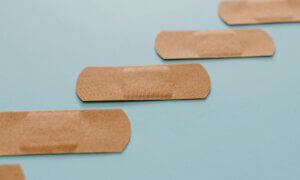A team from Harvard and Sony managed to create what’s possibly the world’s lightest surgery robot.
The mini-RCM, as the surgery robot is named, is the size of a tennis ball but weighs about as much as a single penny.
How could the researchers achieve this?
A collaboration between Wyss Associate Faculty member Robert Wood, Ph.D. and Robotics Engineer Hiroyuki Suzuki of Sony Corporation, the researchers took inspiration from origami.
They layered the materials, before cutting them in a shape that allowed them to form a 3D shape.
With three linear actuators (mini-Las), it can move in multiple directions and correct tremors during laparoscopic surgery.
“The mini-LAs are themselves marvels in miniature, built around a piezoelectric ceramic material that changes shape when an electrical field is applied.
The shape change pushes the mini-LA’s “runner unit” along its “rail unit” like a train on train tracks, and that linear motion is harnessed to move the robot.
Because piezoelectric materials inherently deform as they change shape, the team also integrated LED-based optical sensors into the mini-LA to detect and correct any deviations from the desired movement, such as those caused by hand tremors”, explains the Harvard release.
How accurate is this robot? The mini-RCM tests dramatically improved user accuracy, reducing error by 68% compared to manual operation, according to this report.
You can see more about the tests the Mini-RCM undertook and what comes next for this medical robot here.
Follow TechTheLead on Google News to get the news first.






















